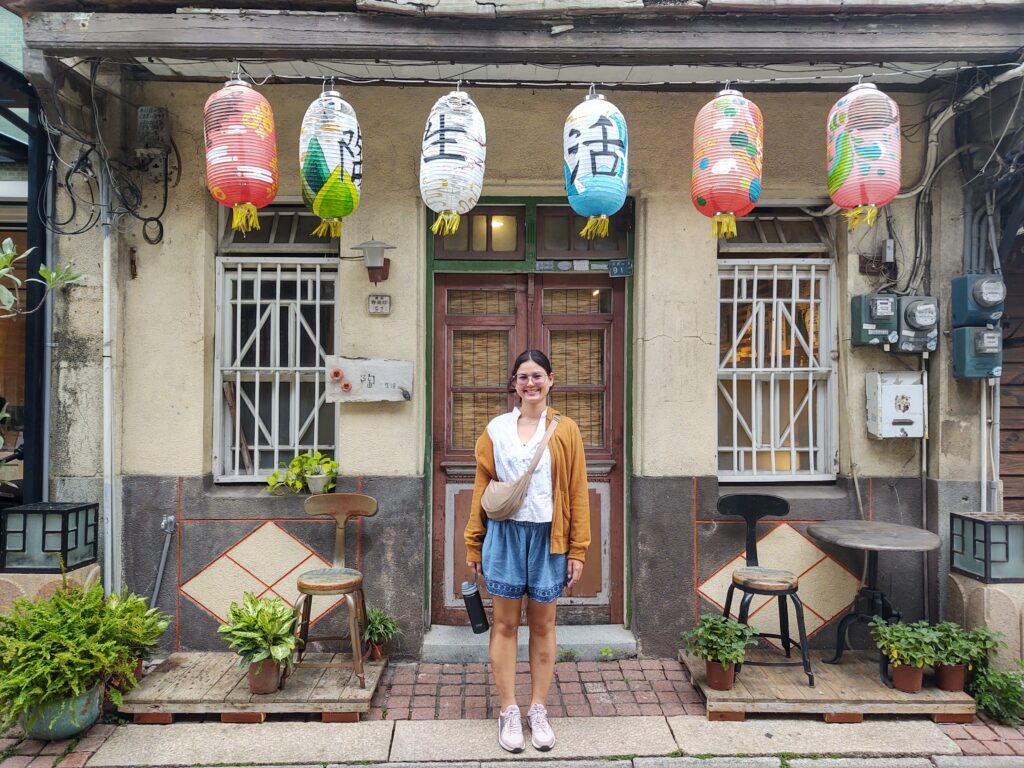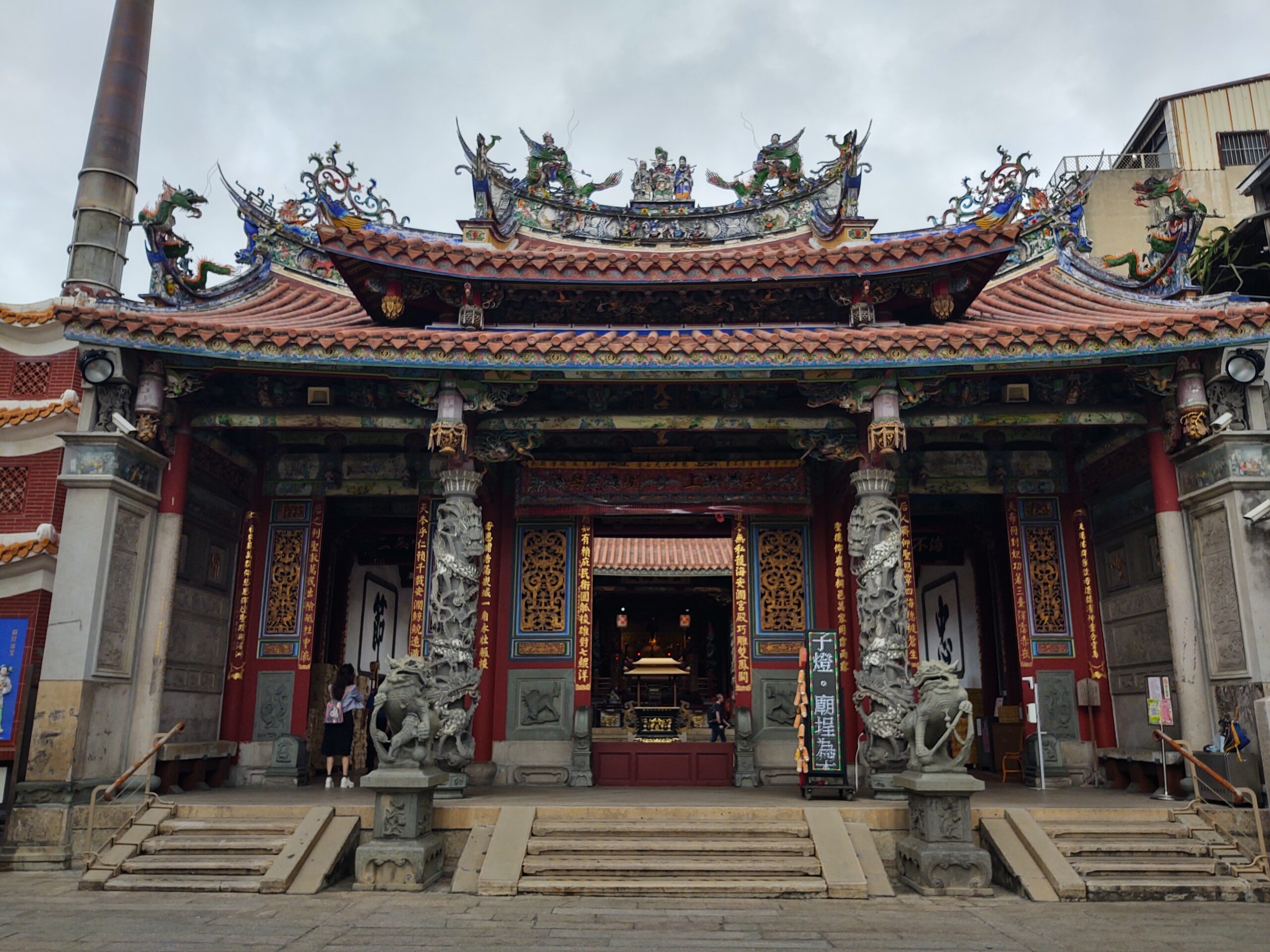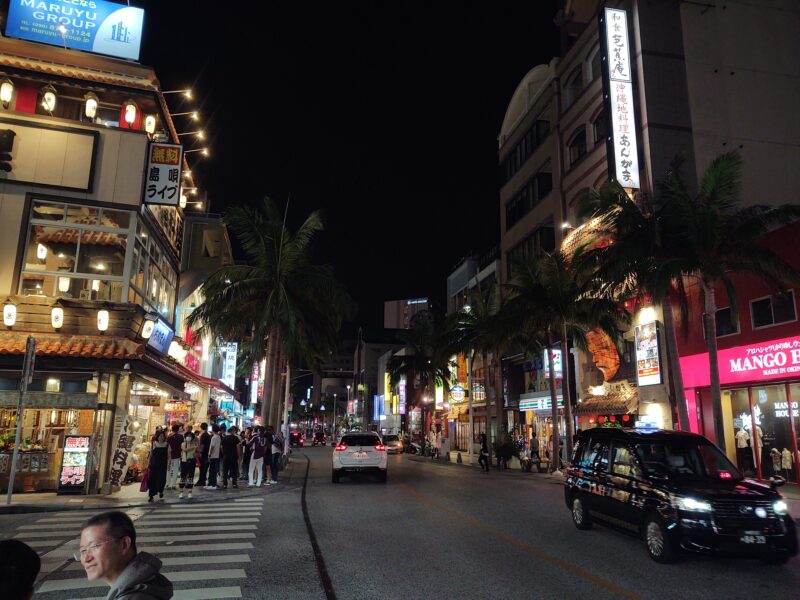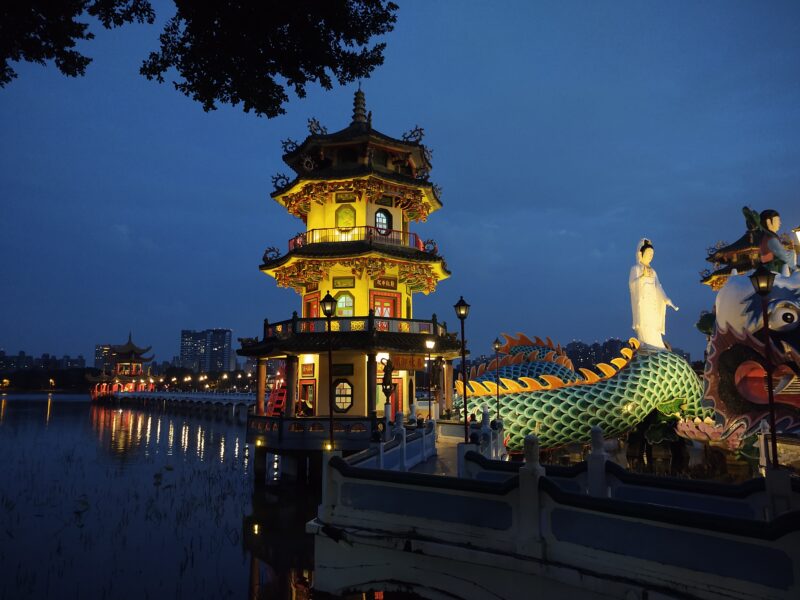See also:
Special thanks to Nick Kembel, whose guidance was indispensable in putting this trip together. His site, Taiwan Obsessed, is the ultimate reference for planning a Taiwan trip.
Taiwanese History Crash Course, Part Two
I’d like to give some context on this next city by starting you off with a trivia question: Historically, who controlled Taiwan?
It’s a simple question – with a not-so-simple answer.
Colonial Era
In the 1500s, Portuguese explorers named the island Formosa (“beautiful island”), but they never established a settlement.
Taiwan mostly consisted of regional aboriginal tribes before the Dutch secured settlements in the southwest in the 1630s. The Dutch expanded into the north after defeating the Spanish in 1642, who had occupied that region.
Chinese Civil War
At the same time, a civil war ravaged mainland China, where the Qing dynasty slowly ousted the Ming over nearly a century. Taiwan, just 100 miles off the coast, was inevitably drawn into the conflict.
In 1661, a Ming general infamously known as Koxinga fled the mainland and seized Taiwan from the Dutch. He planned to regroup his forces on the island before launching an assault to reclaim the mainland from the Qing.
Internal Conflict in Ming Taiwan
But not all went according to plan. Koxinga died from malaria in 1662 at age 37. His sons fought for the throne, but the internal conflict led many soldiers and civilians to defect to the Qing.
Koxinga’s son Zheng Jing took charge and continued to honor the Ming dynasty during his rule of Taiwan. But when he died in 1681, another coup emerged between his sons that ultimately led to fratricide. The Ming loyalists were divided and vulnerable, with continuous Qing pressure.
Qing Rule
In 1683, a Qing navy led by Shi Lang – a former Ming officer who had served under Koxinga’s father before switching sides – won a decisive battle, causing the Ming loyalists to finally surrender Taiwan.
Taiwan remained part of the Qing empire for two hundred years until the Sino-Japanese War, when it passed into Japan’s control in 1895.
Taiwan in the 20th Century
Japan ruled Taiwan until its World War II defeat in 1945. At that time, mainland China was divided once more.
Just like Koxinga nearly three centuries earlier, Chiang Kai Shek’s opposition party fled mainland China and took over Taiwan, establishing the country as we know it today.
Bottom Line
So, long story short, Taiwan was held by the Dutch, Chinese, and Japanese before it finally became independent in 1948.
And more than any other city, Tainan is where one can see all this heritage blended together in the city’s historic buildings, styles, and sites.
Tainan is where the Dutch first claimed their first foothold in Taiwan. It’s where Koxinga defeated them and became the capital under his family’s rule. Shi Lang also won his decisive victory for the Qing in Tainan. And like so much of Taiwan, years of Japanese and Chinese cultural history are woven in the fabric of Tainan’s streets.
In sum, Tainan is Taiwan’s oldest city with, arguably, the most historic significance.
With that context, let’s pick up the travel stories where we left off.
Heading South
After a good night’s rest, a quick breakfast, and a short waterside stroll at Sun Moon Lake, we embarked on our altered itinerary for the day. With Alishan closed for typhoon safety, we took the 1.5-hour bus back to Taichung train station instead.
We picked up some sponge cakes at a local bakery. They’re a personal favorite and a familiar flavor from my childhood – my family would always grab some whenever we’d visit Chinatown in Flushing, New York City. The ones here in Taichung were superb, incredibly fluffy and sweet.
After a two-hour train ride through rolling plains of rice fields under distant mountains, we disembarked in the center of Tainan.
Day 5: Tainan City
Cream and I were transported back in time as we strolled through quiet covered sidewalk passages between weathered old buildings. We passed small, homey shops including bakeries, barbers, traditional medicine, and tea stores. Compared to Taipei’s modern crowded bustle, Tainan felt charmingly older and more laid back.
We walked by Xu Feng Hao, a fruit and ice cream stand in an interesting old shophouse building that’s now Instagram-famous. We also passed by a movie theater with unique street art featuring portraits of actors from all over the world.
We soon reached Yongle Market, one of Tainan’s largest fresh markets. It was mostly closed by the early afternoon, but the sushi bar was still open with mellow Japanese lanterns and lights. It was highly recommended in my research, and quite delicious.
Shennong Street
Next, we stopped by Shennong Street, full of more colorful street art and old decorations.
Many of the shops here were closed too – perhaps because of the incoming typhoon – but we enjoyed admiring the storefronts in the narrow alley. We stepped into a few quiet stores selling unique trinkets and souvenirs.

A random turn led us straight to a busy temple with a colorful interior, called the Wind Temple. A visiting troupe performed Chinese opera out front, elaborately costumed as deities, their voices soaring over fanfare instruments.
Snail Alley
We grabbed a refreshing iced tea from one of the shops on every corner and continued winding our way through the city. A snail mural marked the entrance to Snail Alley, and we creeped in.
The narrow streets, gardens, and pictures of snails were lighthearted and charming. We stopped at a tiny window shop specializing in dorayaki, a personal favorite Japanese pancake snack.
Taiwanese Tea Ceremony
Tired from our long walk, we looked for another quick drink and popped into Jerry’s Lab, a hole-in-the-wall specialty tea shop. A sign on a cart out front read Only milk tea, no water, no sugar.
The interior was relaxed and quiet. Two women sat in the back sipping tea over thoughtful conversation. The owner, named Jerry, worked behind the bar at the entrance, welcoming us in. Down the rabbit hole we went.
The menu had a list of specialty teas that he had curated, entirely in Chinese. We had no idea where to begin, but thankfully the shop wasn’t too busy. Jerry spoke good English and helped us pick out one of Taiwan’s best black teas to brew, plus a classic milk tea.
Soon, Jerry brought over a set for our impromptu tea ceremony. He opened the small pot and invited us to smell the leaves, then poured some water in and set a minute timer to brew the first round. He held one finger on the pot’s lid as he masterfully poured the tea into each of our little cups.
“Smell first, like this,” he said, holding the tea still in front of his nose while shaking his head left and right to get a whiff. “That’s what we do here in Taiwan. People will be impressed when they see you do that! Then take a sip.”
I smelled the tea and had a taste. It had a thick aroma and tasted incredibly fresh, with a rich, smooth, and full-bodied flavor. He showed us how to brew more using the timer, then returned to the bar to prepare the milk tea.
“Here it is: the best milk tea in Taiwan,” Jerry announced, carrying it over with a big smile. “Enjoy!”
Cream and I thanked him, sitting back and relaxing while we sipped the teas for a while. Like the black tea, the milk tea tasted refined and special. It had a slight woodiness to the flavor, balanced against the creamy milk and a delicate sweetness.
We relaxed as we sipped our drinks for a while, savoring and unpacking their nuances. More than just a quick break, the tea ceremony was a pleasant surprise and a welcome cultural experience. Eventually, we thanked Jerry for his welcoming hospitality and headed into the late afternoon.
Tainan Confucius Temple
Thoroughly refreshed, we walked to the nearby Tainan Confucius Temple. Built by Koxinga’s son Zheng Jing in 1665, it’s Taiwan’s oldest Confucian temple. It’s also considered Taiwan’s first educational institution, where civil servants came to study.
We explored the temple complex, the walls painted a faded red. True to Confucius’ humble teachings, it was a tranquil and relatively simple place meant to serve a useful purpose for the community. Tablets were on display in the different halls, and a side hall featured another set of beautiful calligraphy panels.
Walking Through History
This area of Tainan is full of historic buildings so we had plenty to explore. We exited the temple and wandered past a former police station in a cool art deco building that is now part of the Tainan Art Museum.
A block away, we admired the National Museum of Taiwanese Literature, a former government building.
My personal favorite, though, was the Hayashi Department Store. The five-story building was built in 1932 during the Japanese Colonial Period, when wealthy locals would come to shop in elegance.
At the end of the Japanese rule, Hayashi’s owner abandoned it and returned to Japan. The store was finally restored and reopened in 2013. It still serves as a department store today with a fabulous interior, perhaps resembling what it might have been like to shop there in its original time. A unique Torii shrine sits on a rooftop terrace with a view over the city.
Mala Hot Pot
We ambled through the vibrantly lit streets under an apocalyptic magenta dusk sky, eventually making our way to dinner.
There are few foods Cream and I love more than mala hot pot, where meats and veggies are boiled in a spicy, mouth-numbing red soup full of chilis and peppercorns. While technically mala soup is from China, Taiwan has helped perfect and popularize the dish on a global scale.
The mala we had on this particular evening was bursting with flavor – some of the best we’ve had. Taiwan’s exquisite food continued to amaze us as we returned home satisfied and stuffed.
Day 6: Tainan & Anping Temples
View all Tainan & Anping photos
The next morning, the streets were empty. Almost all the shops were closed, but a handful remained open. It seemed odd.
I was aware of the possibility of a “typhoon day” – where local governments declare an emergency and tell everyone to stay home for safety, canceling all school and non-essential work. However, I couldn’t find a website that provided official information to check despite repeated Googling. Uncertain, I hoped someone would just tell us.
While Typhoon Koinu was pummeling Taiwan’s southeast coast, the weather in Tainan was calm – overcast, but without rain or wind – so I thought we might still manage to have a relatively normal day.
We set out and discovered that fortunately, all the city’s historic temples remained open. Almost everything else was closed, though, and the day got weirder and weirder as we toured unusually quiet streets.
Historic & Cultural Sites in Tainan City
After a quick one-two-punch breakfast of dumplings and soy milk, we made our way to central Tainan.
First stop: Chikan Tower, which was built by the Dutch in 1652, making it the oldest building in the city area. We admired the tower’s fusion of Eastern and Western architecture through the closed gate.
God of War Temple
A crimson wall across the street marked the God of War Temple. While the precise construction date is unknown, it is thought to date from the late 1600s. The main altar displays a statue of Guandi, a Han-era general who was deified to honor his outstanding loyalty and leadership for future generations.
Incense and furnaces burned in the courtyard behind the altar, where we explored a maze of back halls amidst crimson walls and musty smells.
Tainan Grand Matsu Temple
Nearby, the Tainan Grand Matsu Temple honors Taiwan’s unofficial patron goddess. Matsu is the goddess of the sea, and since Taiwan could be considered an immigrant country, with its peoples originating from China and elsewhere in Asia from the 16th century onward, Matsu has been worshiped throughout its history for her role in providing safe passage and protection.
The temple is ornate, with a grand main hall featuring a beautiful courtyard and an important Matsu statue. Most other Matsu statues in Taiwan are based on this particular work by a master sculptor from Quanzhou.
Before it was converted to a temple, the complex was built as the palace of prince Zhu Shugui, a blood relative of the Ming royal family. The prince fled China with Koxinga’s descendants and lived in Tainan as a safekeeper of the dynasty. On the night of the Ming defeat in 1683, Zhu and his five concubines committed suicide together in the second room of this very temple, dramatically marking the end of the Ming era.
Tainan Tiangong Temple
We roamed through narrow streets to reach the Tiangong (Heaven) Temple, renowned for its single-stroke calligraphy tablet that means Whatever the human minds intend, the Gods decide the end.
The temple was beautifully decorated with paintings and stonework, with altars to several gods in the back hall. Locals shuffled in and prayed quietly, starting at the temple’s entrance and slowly making their way forward.
Anping District
On the coast just a few miles west of Tainan city, Anping is precisely where the Dutch established their first colony in Taiwan.
We took a bus over and enjoyed a stroll alongside a river inlet for the last stretch of the way, with [closed] shops and good views all around. The weather was still okay, just cloudy.
Soon we passed a statue of a lion with a sword in its mouth, an old symbol of Anping that marks the historic center.
We stopped at a small noodle shop for lunch, communicating with Google Translate with a very sweet old lady who was happy to help us. Consistent with all the food we had in Taiwan, her noodles and veggies were delicious, well balanced, and flavorful.
Anping Grand Matsu Temple
Cream and I walked a bit further to reach the Anping Grand Matsu Temple at the center of Anping’s historic district. Built just after Koxinga’s takeover, it’s Taiwan island’s oldest Matsu temple. The temple features intricate decorations and a large courtyard out front where we gazed at the captivating sea green facade.
Fort Zeelandia
Next to the temple stands Fort Zeelandia, the first Dutch fort in Taiwan.
In the early years of the Dutch colony, they faced many battles against local aboriginal tribes, struggling to gain ground. Their fort here in Anping helped control the harbor for trade and provided a foothold against being pushed off the island.
Anping Old Street
Near the fort, we walked down Anping Old Street, Taiwan’s oldest street, expecting the usual street market bustle. Instead, it was empty and every shop was closed. At this point, the reality of the typhoon day situation was becoming pretty obvious, but I still hadn’t heard anything.
We walked a little further up to a ridge overlooking the brackish estuaries north of Anping. A calm trail offered good views over the water.
Further up, we passed the Anping Treehouse. We settled into a nearby cafe to rest after the long walk. We asked the owners, who finally informed us that, indeed, a typhoon day had been declared.
The coffee was good and our hosts were friendly. We chatted for a bit before heading out. We walked along the harborside before calling an Uber to get back to the city center.
Tainan Cuisine
Tainan is famous for its local cuisine, widely considered the best in Taiwan. I wanted to try some of the specialties and after browsing some menus online, we picked out an authentic restaurant near our hotel that thankfully was open for dinner.
The food we had at Du Hsiao Yueh was fantastic. We tried golden kimchi, some takoyaki, and the highlight: milkfish soup, a Tainan classic with a light, clear soup and tender, juicy fish. I also had some braised pork rice, a simple yet flavorful dish that’s another Taiwanese staple.
A worker prepared noodles and soups in the front of the restaurant while we sipped some tea, fully satisfied. It was a pleasant end to a strange day.
Onward to Kaohsiung
The typhoon had passed by the morning, dissipating on its way towards mainland China.
We hopped on the local train for a quick 45-minute ride to Kaohsiung, southern Taiwan’s largest city with a vibrant and thriving arts scene. I’m excited to tell you about it in Part Four!
See you there,
Andrew


